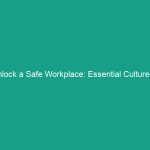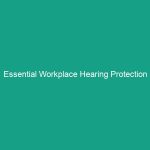Introduction
In today’s fast-paced work environments, ensuring the health, safety, and Environment (HSE) standards is more crucial than ever. Safety inspections play a vital role in identifying Hazards, ensuring compliance with Regulations, and protecting employees from potential dangers. The best practices for Safety inspections are essential for creating a culture of Safety and well-being in the workplace. By implementing these practices, organizations can minimize risks, prevent accidents, and foster a safer working environment.
Understanding Regulatory Frameworks
Importance of Compliance
Compliance with regulatory frameworks is a cornerstone of any effective safety inspection program. Organizations must stay abreast of local, national, and international regulations that govern Workplace Safety. These regulations, which may include OSHA Standards in the United States or other relevant guidelines worldwide, set the minimum safety expectations for employers. Non-compliance can result in severe penalties, including fines, legal actions, and reputational damage.
Key Regulations to Consider
Understanding specific regulations relevant to your industry can help tailor your safety inspection processes. For instance:
- osha (Occupational Safety and Health Administration): Establishes and enforces Workplace Safety standards in the U.S.
- ISO 45001: An international standard for Occupational Health and safety management systems.
- NIOSH (National Institute for Occupational Safety and Health): Provides research and recommendations for preventing work-related injuries and illnesses.
Adhering to these regulations ensures not only compliance but also the safety of employees, which can lead to increased productivity and morale.
Best Practices for Safety Inspections
Creating a Comprehensive Inspection Checklist
One of the fundamental best practices for safety inspections is the development of a comprehensive checklist. This checklist should encompass all potential Hazards within the workplace, including mechanical, electrical, chemical, and ergonomic risks. By detailing specific inspection criteria, you can ensure that no element is overlooked during inspections.
Conducting Regular and Unannounced Inspections
Regularly scheduled inspections are essential, but incorporating unannounced inspections can provide a more accurate representation of workplace conditions. Employees are more likely to adhere to safety protocols when they know inspections may occur at any time. This unpredictability helps maintain a culture of compliance and accountability.
Involving Employees in the Inspection Process
Employee involvement is crucial in identifying potential hazards. Engaging workers in the inspection process not only promotes transparency but also empowers them to take ownership of their safety. Encourage employees to report unsafe conditions and provide input during inspections. Their firsthand experience can uncover risks that may not be evident to supervisors or safety officers.
Training and Education
Training is an integral part of effective safety inspections. Providing employees with ongoing Training ensures they are aware of safety protocols and understand how to recognize hazards. Regular training sessions should cover topics such as emergency response Procedures, proper use of Personal Protective Equipment (PPE), and specific safety practices related to their roles.
Utilizing Technology in Safety Inspections
Embracing technology can enhance the efficiency and effectiveness of safety inspections. Utilizing mobile applications for inspections allows for real-time data collection, tracking of issues, and streamlined reporting. These tools can also facilitate communication between teams and ensure that corrective actions are addressed promptly. Technology can significantly improve the accuracy of inspections and foster a more proactive approach to Workplace Safety.
Avoiding Common Mistakes in Safety Inspections
Neglecting Documentation
One of the most common mistakes during safety inspections is the failure to document findings adequately. Without proper documentation, it becomes challenging to track improvements, follow up on corrective actions, or demonstrate compliance during audits. Ensure that all inspection findings are recorded, along with the actions taken to address identified issues.
Overlooking Follow-Up Actions
Identifying hazards is just the first step; addressing those hazards is where the real work begins. Failing to follow up on inspection findings can lead to recurring issues and pose significant risks. Establish a clear process for tracking corrective actions and ensure that responsible parties are held accountable for addressing any safety concerns.
Inconsistent Inspection Frequencies
Inconsistency in inspection frequencies can lead to a false sense of security. Organizations may believe they are compliant based on sporadic inspections, which can miss critical hazards. Establishing a regular schedule for inspections, along with unannounced checks, can help maintain a high standard of safety.
Ignoring Employee Feedback
Employee feedback is invaluable in shaping effective safety practices. Ignoring their input can lead to a disconnect between management and staff, potentially resulting in unsafe conditions. Encourage open communication and actively seek employee feedback during safety inspections. This approach fosters a culture of safety and encourages employees to take an active role in their well-being.
Case Studies: Learning from the Past
Case Study 1: A Manufacturing Facility
A manufacturing facility implemented a rigorous safety inspection program but suffered a significant accident due to an overlooked machine hazard. An investigation revealed that the inspection checklist lacked critical items related to machine Maintenance. Following this incident, the facility revised its checklist to include detailed machine safety checks, incorporated employee training sessions on equipment safety, and increased the frequency of inspections. As a result, the facility saw a 40% reduction in workplace accidents over the following year.
Case Study 2: A Construction Site
A construction company faced multiple citations for safety violations due to inconsistent safety inspections. To address this issue, they developed a comprehensive inspection program that included daily safety briefings, weekly inspections, and mandatory reporting of unsafe conditions by employees. By fostering a culture of accountability and transparency, the company not only improved compliance but also dramatically reduced accident rates and improved employee morale.
Challenges in Implementing Best Practices for Safety Inspections
Resource Limitations
One of the significant challenges organizations face is the allocation of resources for safety inspections. Limited budgets can hinder the ability to conduct thorough inspections or provide adequate training. To overcome this challenge, organizations can prioritize safety spending by assessing risk levels and focusing resources on high-risk areas. Engaging in partnerships with external safety consultants can also provide valuable insights without straining internal resources.
Cultural Resistance
Implementing Best Practices for safety inspections may encounter resistance from employees who perceive these measures as unnecessary or burdensome. It is essential to create a culture where safety is valued and prioritized. This can be achieved through effective communication, demonstrating the Benefits of safety inspections, and involving employees in the development of safety practices. Leadership must model safety behaviors and encourage staff to embrace their role in maintaining a safe work environment.
Lack of Continuous Improvement
Safety inspections should not be viewed as a one-time activity but as part of an ongoing process of continuous improvement. Organizations that fail to adapt their safety practices based on inspection findings, employee feedback, and industry best practices may find themselves stagnating. To foster a culture of continuous improvement, organizations should regularly review and update their safety protocols, provide training opportunities, and encourage employees to contribute to safety discussions.
Future Trends in Safety Inspections
Integration of Artificial Intelligence
The future of safety inspections is likely to be shaped by advancements in artificial intelligence (AI). AI can analyze vast amounts of data from past inspections to identify trends and predict potential hazards before they occur. This proactive approach could revolutionize the inspection process, allowing organizations to address risks before they escalate into accidents.
Emphasis on Mental Health
As awareness of mental health issues in the workplace grows, safety inspections will increasingly incorporate mental well-being assessments. Organizations may begin to evaluate stressors, work-life balance, and employee support systems during inspections. Addressing mental health as part of safety protocols can improve overall Workplace Safety and employee satisfaction.
Sustainability Considerations
With the growing emphasis on Sustainability, safety inspections will need to consider environmental impacts as well. Organizations may adopt practices that not only ensure the safety of employees but also minimize environmental hazards. This shift could involve evaluating waste management, energy usage, and other sustainability metrics during safety inspections.
Conclusion
Implementing the best practices for safety inspections is essential for creating a safe work environment, fostering employee engagement, and ensuring regulatory compliance. By understanding the importance of comprehensive safety inspections, avoiding common mistakes, and learning from real-world case studies, organizations can significantly enhance their safety culture. As the landscape of Workplace Safety continues to evolve, staying informed about new trends and integrating innovative practices will be key. We encourage all organizations to prioritize safety inspections and continuously strive for improvement in their HSE practices. Remember, a safe workplace is a productive workplace—let’s make safety a priority together!


